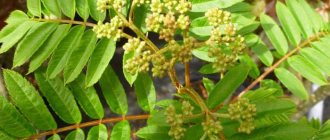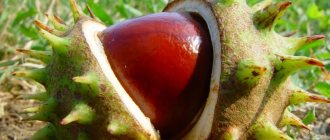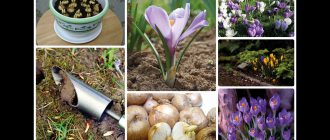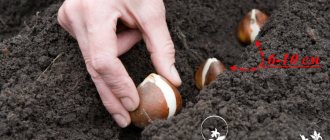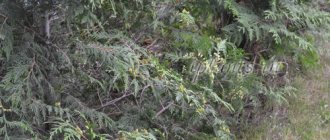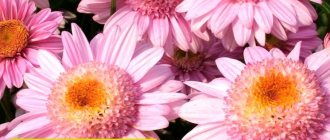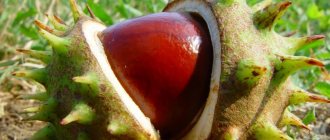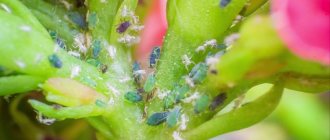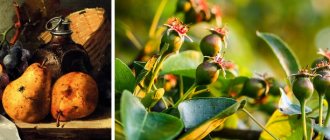Author: Natalya Category: Garden plants Published: March 04, 2019Republished: February 04, 2019Last edits: November 16, 2020
- Garden care rules
- When to dig up bulbs
The hazel grouse begins to bloom as soon as the last snow melts. How pleasing their sunny orange hats are to the eye after the dull undertones of the passing winter! But flower growers love hazel grouse not only for their beauty: fritillaria is a real protector of the garden. It is believed that the specific smell of hazel grouse is good at repelling mole crickets and moles. Therefore, many people plant this flower around the perimeter of a flower bed or plot. But it should be noted that growing such a barrier from hazel grouse is not an easy task. After all, fritillaria babies don’t grow well, and ready-made bulbs in stores aren’t that cheap, and there’s also the risk of buying a frozen bulb...
- How to encourage a hazel grouse to raise children?
- How to properly plant a new and replant an old fritillaria bulb?
- When is it better to refrain from buying hazel grouse?
Read our article.
Planting and caring for hazel grouse
- Planting: sowing seeds in the ground immediately after collection. The bulbs are planted in late August or early September.
- Digging: in early to mid-July, when the stems and leaves begin to turn yellow and die.
- Storage: in a well-ventilated area where the temperature does not rise above 30˚C.
- Lighting: bright sunlight, partial shade.
- Soil: moderately moist, fertile, light and well-drained.
- Watering: plentiful, but only during dry seasons.
- Feeding: with dry fertilizers followed by watering the area: 1st time in the third decade of April, 2nd time after flowering.
- Reproduction: seed and vegetative (replacement bulbs and forced division of the mother bulb).
- Pests: lily beetles, onion daylilies, onion rattles.
- Diseases: There are cases of damage to the bulb. Hazel grouse is resistant to viruses and bacteria.
- Properties: many types of hazel grouse contain alkaloids that are poisonous to humans.
Read more about growing hazel grouse below.
Hazel grouse , or Fritillaria (lat. Fritillaria) is a genus of herbaceous perennials of the Liliaceae family. In nature, about one hundred and fifty species of plants are known, growing in the temperate zone of the Northern Hemisphere, in East or West Asia. The hazel grouse plant received its Latin name due to the similarity of the shape of the corolla of the flower with a glass for throwing dice, which is called “fritillus” in Latin. The Russian name comes from the word “pockmarked”, which popularly means “motley”.
When to plant imperial hazel grouse in open ground in the fall, in what month
In order for fritillaria to take root normally in the soil, it is necessary to choose the most suitable time for the procedure. After all, if you plant too late, the bulbs may not have time to take root and may easily freeze. And if you plant too early, then due to warm, favorable conditions, it will begin to grow, which, when it gets colder, will lead to its weakening or even freezing.
When is it better to plant imperial hazel grouse bulbs, in what month? Depending on the conditions, the procedure is carried out from late August to mid-October . But you need to focus, first of all, on weather and climatic conditions. When choosing a planting time in the fall, you must take into account the following criteria:
- There should be 3-4 weeks left until the first autumn frosts.
- The soil temperature should drop to 7-10 degrees Celsius at a depth of 15 centimeters.
- The air temperature during the day should be about 10-15 degrees Celsius (but not lower), and at night about 5 degrees Celsius (and also not lower).
In different regions of our country where gardeners and flower growers live, climatic conditions differ, therefore, the first autumn frosts occur at different times. Therefore, it is necessary to allocate approximate dates for planting bulbs of imperial hazel grouse in open ground in the fall in different regions :
- In the middle zone (Moscow region) - mid-September (under favorable conditions, the entire second half of September);
- In Siberia, the Urals, the North-West (Leningrad region) - late August-early September;
- In the South (Krasnodar Territory (Kuban), Northern Caucasus) - late September, early October (if weather permits, the entire first half of October).
Grouse planting dates according to the lunar calendar 2021
If it is easy to determine the general time for planting fritillaria, then how to choose a specific day for the most effective planting? The cycles of the moon will come to the rescue, helping summer residents and gardeners in many gardening matters.
dates for imperial hazel grouse according to the 2021 Lunar calendar:
- Favorable days: in August - 6, 7, 8, 9, 10;
- in September — 3, 4, 5, 6, 7, 8, 9, 15, 16, 19, 20, 21, 24, 26, 29, 30;
- in October — 3, 4, 5, 6, 8, 9, 10, 11, 13, 14, 15, 27, 28.
- in August - 3, 4, 5, 19, 31;
When is it better to plant fritillaria: spring or autumn?
As you probably already understood, this material is about autumn planting. But perhaps many people have a question: when is it better to plant flower crops - in autumn or spring?
The answer to this question is clear: planting hazel grouse bulbs in open ground should be done in the fall ! And there are a number of good reasons for this. Firstly, the royal plant needs a long period of dormancy at low temperatures to form flower buds. Secondly, during spring planting, the bulbs will not have time to ripen and can easily die during autumn planting (after all, the bulbs need to be dug up in early summer, and then planted in the fall that same year).
Botanical description
Fritillary flowers look like a small palm tree with flowers at the top and are often called trees of paradise. Grouse bulbs consist of several wide, fleshy scales that are renewed annually. Hazel grouse bulbs do not have integumentary scales, so they require very careful handling. The ground stem is covered with numerous narrow-linear or oblong-lanceolate leaves, whorled or scattered.
- Jaundice: cultivation, properties, types
Drooping flowers, solitary or collected in an umbrella or panicle, attract attention with bright perianths in yellow, purple, white or red shades. Fritillaries are ephemeroids: at the base of each leaf there is a nectary in the form of an oval, round or triangular depression. The fruit of the hazel grouse is a hexagonal capsule with numerous seeds, sometimes winged, sometimes wingless.
Features of hazel grouse
Such plants are similar in appearance to a small palm tree, at the top of which there are spectacular flowers. They are often called the “tree of paradise.” The bulbs contain several fleshy and relatively wide scales, which are renewed every year. There are no integumentary scales on the bulbs, and therefore they can be very easily injured if handled carelessly. On the ground leafy stem there is a large number of oblong-lanceolate or narrow-linear leaf plates, which are scattered or whorled. Drooping flowers can be single or part of a panicle-shaped or umbellate inflorescence, which look very impressive due to the rich color of the perianths in purple, red, yellow or white. These plants are ephemeroids; at the base of any of the leaf blades there is a nectary, which is a round, oval or triangular depression. The fruit is a hexagonal capsule containing many seeds inside; it can be wingless or winged.
Imperial hazel grouse - planting and care
Growing hazel grouse in the garden
Let's talk about a plant that is deservedly called imperial hazel grouse, which is sometimes called royal, and sometimes - royal crown. Growing imperial hazel grouse in our latitudes became fashionable in the sixteenth century, but still it sometimes baffles flower growers - despite all the efforts of the gardener, it may not bloom.
Planting and caring for tulips - growing in a flower bed
The imperial hazel grouse begins to bloom as soon as the snow melts: lemon-yellow or juicy-orange flowers on tall peduncles look incredibly beautiful after a dull winter. They go well with other spring flowers. The hazel grouse bulb usually forms two peduncles, at the base of which new bulbs are formed, and, unfortunately, the hazel grouse grows few children, so buying hazel grouse bulbs in the store is not cheap.
In the photo: Blooming hazel grouse with bell flowers
The imperial hazel grouse loves well-lit areas, but also grows well in partial shade. Likes light, fertile, moderately moist soil. It is very important to ensure good drainage.
Why doesn't it bloom
It sometimes happens that a healthy-looking plant refuses to produce buds. Why this happens and what to do about the problem, we will find out further.
Overmoistening
The most common cause of the problem. The risk of lack of flowers is especially high if waterlogging is combined with cool air temperatures. To avoid problems, you need to set up a watering schedule, and after the next collection of bulbs, warm them up a little in the sun.
Small planting material
If flowering does not occur in recently planted hazel grouse, it may be due to poor-quality planting material. If the diameter of the bulb has not yet reached 0.5 cm, you can’t expect flowering yet. The plant will initially spend all its energy on increasing the volume of the bulb.
No transfer
If the bulbs are not dug up and divided for several seasons, the plants may also refuse to bloom. This is due to the formation of children, who take away nutrients and strength from the mother hazel grouse. Dig up the bulbs after flowering and divide if necessary: this approach will help avoid the problem.
So, we learned what flowers like hazel grouse are. This is a wonderful option for a flower bed: unusual, original and memorable. Even if the hazel grouse does not bloom for so long, it manages to decorate the garden with its presence, and also serves as an excellent repeller for harmful rodents.
Planting hazel grouse
When to plant
When the growing season of hazel grouse is over, its bulbs are dug out of the ground and stored in a dry and ventilated room until the roots appear on the bulb: now is the time to plant it in the ground. This usually happens at the end of August or beginning of September. The bulbs of the imperial hazel grouse do not have protective integumentary scales, and they quickly dry out. Therefore, do not buy hazel grouse bulbs at late autumn sales: they are most likely overdried and are unlikely to germinate.
If for some reason you are unable to plant hazel grouse bulbs in time, immerse them in damp peat and place them in the refrigerator in the vegetable compartment. If you do not have time to plant the bulbs before the end of September, planting fritillaries later may result in them not blooming next year.
Before planting, the bulbs should be disinfected with a solution of potassium permanganate, then lightly sprinkled with crushed charcoal.
In the photo: How hazel grouse blooms
How to plant
Before planting, prepare the area: dig it up, mixing sand into the heavy soil, and, whatever the soil, add peat or humus to it. Hazel grouse accepts well and additives in the form of lime or ash. The planting depth from the bottom is 2-3 times the diameter of the bulb, which is about 20-25 cm. A layer of sand is poured onto the bottom of the hole, but if the soil is heavy, it is better to replace the sand with wet peat. Then the bulb is placed bottom down on sand or peat, carefully straightening the roots, and covered with earth. In fact, it is more correct to consider that this is a transplant of hazel grouse, and not planting, although there is no point in arguing about terms if this does not change the essence.
Landing
Let's find out exactly when and how to plant hazel grouse in the garden.
Timing
It is recommended to choose autumn planting for this plant. The optimal time is September-October. Just take into account the climate of your particular region, since the plant must take root in the ground before frost.
Preparation
Prepare the area properly: dig it up, loosen it, take care of drainage if necessary and apply the necessary fertilizers.
Planting material should be carefully selected. Inspect the bulbs, select only whole, healthy and without signs of rot. Discard damaged and rotten specimens.
After preliminary selection, the bulbs should be disinfected. To do this, you need to soak the planting material for 20-30 minutes in a weak solution of potassium permanganate or simply treat it with charcoal powder.
Planting process
Dig holes for the bulbs in the prepared bed. Each recess must be provided with a drainage layer: use coarse river sand for drainage.
Deepen the planting material as follows: tall varieties are planted to a depth of 3 bulbs, low varieties - 2 bulbs. The distance between the bulbs should be 20-30 cm; if we are talking about low-growing varieties, then 15 cm is enough. Sprinkle the planting material with soil and water.
Grouse care
Garden care rules
The hazel grouse is so unpretentious that you don’t have to waste any time on it. If you are not interested in the result - the quality of flowering. Planting and caring for grouse is a wonderful learning experience for beginning gardeners. But if you want to see a truly masterpiece of floriculture art in your garden, you will have to spend some effort caring for the imperial hazel grouse.
Planting hyacinths and caring for them in the garden - detailed instructions
Watering hazel grouse is carried out in dry summers. Make sure that the soil in the area does not dry out too much. After the growing season ends, water the area 1-2 times a month so that the bulbs of faded hazel grouse are not in too dry soil.
Growing hazel grouse also involves feeding the plants with dry fertilizers:
- the first time in the third ten days of April (a tablespoon of Agricola for flowering plants and nitrophoska is mixed with a bucket of humus and scattered 4-5 kg in a layer of 4-5 cm per 1 m²);
- The second feeding is carried out after the hazel grouse blooms: scatter 1 tablespoon of superphosphate and potassium sulfate per 1 m², followed by watering.
In the photo: Opening hazel grouse bud
After each watering, weeding is necessary, but loosening the soil can damage the roots, so simply mulch the soil in the area with peat or humus with a three-centimeter layer immediately after planting, having previously scattered wood ash over the area.
- Knotweed (knotweed): cultivation, properties, application
Why do hazel grouse not bloom?
The reason that your hazel grouse does not want to bloom may be one of the following:
- summers that are too cool or very humid. Dig up the bulbs after flowering and try to warm them naturally before planting;
- bulbs too small. If the bulb is less than 5 cm in diameter, the hazel grouse will not bloom, it will increase the mass of the bulb;
- growing in one place for too long. If you don't dig up the bulbs for the winter, they tend to begin to divide and lose volume. Therefore, dig up medium and large fritillary bulbs after flowering for subsequent autumn planting, and you are guaranteed to get beautiful flowering next year;
- incorrect planting depth: if the depth is insufficient, the plant becomes sensitive to weather changes (in frost it can freeze, in rain it can rot), and if planted too deep, the bulb spends too much energy on germination and survival;
- bad soil. Soil that is too light freezes in winter, and clay soil accumulates too much moisture, which leads to rotting of the bulb. Take care of the right soil composition and good drainage;
- frosty winter with little snow: the bulbs may simply freeze. Cover the hazel grouse planting for the winter with humus or peat mulch with a layer of 10-20 cm;
- preservation of the ovary after the petals fall. If the ovary is not removed in time, then all the nutrients will be spent on it, and not on the development of the bulb and preparation for flowering next year.
Reproduction
In amateur floriculture, the vegetative method of natural division of the bulb is used to propagate hazel grouse. As a rule, one bulb of the imperial hazel grouse produces no more than two large daughter children, so this method is not the fastest, since the child separated from the mother bulb and transplanted grows in the ground for several years until full flowering occurs. But this method is the most reliable.
In the photo: Blooming hazel grouse
You can “help” the hazel grouse to form a baby: after the summer digging of hazel grouse bulbs, a shallow scraping with a diameter of 2 cm is made with a sterile instrument on the largest and healthiest bulb in its fleshiest part and, without treating anything, the wounds are allowed to dry in the air. Then place it in clean dry sand and leave it in a dry room with good ventilation. When the roots of the bulb begin to grow (late August or early September), it is treated with a fungicide and planted in the usual manner. The ovaries that appear on the plant grown from this bulb should be removed, because during this growing season all efforts should be spent on the education and development of the children.
When digging up a bulb, be careful: a small baby may not be noticed.
Seed propagation of hazel grouse is only possible for professionals on an industrial scale.
Hazel grouse breeding
Hazel grouse from seeds
Hazel grouse reproduce by dividing bulbs and seeds, although the generative method is not very popular: you will have to wait seven or even ten years for the first flowering. The seed propagation method is justified only for the industrial cultivation of hazel grouse, when you need to obtain a lot of planting material, and for the sake of obtaining new varieties. Pre-soaked seeds are sown in December to a depth of 1.5-2 cm in boxes at least 15 cm deep, filled with loose soil that does not contain mineral fertilizers or manure. The crops are placed in the basement, where the temperature is kept between 1-2 ºC. In early spring, the boxes are moved to a sunny place in the garden and care is taken throughout the season so that the soil in them does not dry out. When the above-ground part of the seedlings dies off in the summer, the bulbs formed in the soil are selected and stored in dry sand at a temperature of 20 ºC, and in September they are planted in open ground to a depth of 6-10 cm, after which the area must be covered for the winter.
Reproduction of hazel grouse by dividing bulbs
For vegetative propagation, dividing the bulbs is used: every year, each bulb is divided into two parts, since hazel grouse form daughter bulbs infrequently and their number is always small. An onion consisting of two scales is simply broken into two parts, the broken area is treated with crushed coal, the sections are dried so that the wound heals, and parts of the onion are planted in the soil a little earlier than whole bulbs - three weeks after removal from the soil, since during storage they dry out.
Reproduction of hazel grouse by children
Grouse bulbs can be forced to form daughter shoots, since these plants, like hyacinths, have the ability to form children on the wound surface. How to do it? After you remove the bulbs from the soil, use a sharp, sterile instrument to make one or two cone-shaped holes with a diameter of 1.5-2.5 cm on the thickest part of the outer scales of a healthy large bulb. Dry the wounds for several days, place them in storage in dry sand and keep in a well-ventilated, warm area. As soon as the roots grow on the bulb, it is planted in open ground in the order we described. Your task is to prevent the hazel grouse that has grown from the bulb from blooming in the first year by removing the developing buds. When digging up bulbs at the end of the season, be careful: the children formed at the site of the wounds may be small.
Grouse after flowering
After the hazel grouse have bloomed, they will delight the eye with their beautiful greenery for some time, but by the beginning of July the hazel grouse lose their decorative effect. Digging of bulbs begins when the above-ground part of the plants begins to turn yellow and die. But you should not wait until this process is completed, since the bulb resting at this time becomes easy prey for pests.
In the photo: Large hazel grouse bulb
When to dig up bulbs
As soon as the leaves begin to turn yellow, dig up the bulbs, free them from dry husks, rinse with warm water, soak for half an hour in a pink solution of potassium permanganate, remove, if necessary, rot spots and other damage by treating the cuts with a fungicide and sprinkling them with wood ash, and place in dry, ventilated room for drying wounds.
Selecting and preparing a site for hazel grouse
When to replant primrose - in spring, summer or autumn
Before planting hazel grouse in the fall, you need to prepare the place. This is necessary for the flower to be healthy and develop properly.
The plants in question love a little shade, but they can also grow well in full sun. In this regard, a flowerbed can be chosen in an open area, especially since for the conditions of the middle zone such a place will be a priority. In the spring, the bulbs germinate faster and ripen by the winter. In southern areas, the bulb can be planted in partial shade.
The soil for hazel grouse should be loose and fertile. The plant bulb can be grown in the same place for more than five years.
How to prepare a place
The soil is prepared as follows:
- Sand is added to the soil, which will make it looser. For one sq. m. you need two buckets of sand.
- In addition, the soil is enriched with organic fertilizers. It is recommended to add humus, leaf soil, and compost.
If the bed is well prepared, then in the future you will not have to add additional organic or mineral fertilizer to the soil next to the plant.
Important! The most important thing is that in the place where the hazel grouse will grow, moisture and melt water should not stagnate.
Types and varieties
The classification of hazel grouse is not very complicated, but delving into professional subtleties is the job of scientists and pedants. We will make a general overview and focus on those species and varieties that are of interest to a large number of amateur gardeners. So, hazel grouse are divided into six sections:
Section I Eufritillaria in turn consists of four groups, which includes species originating from the Mediterranean, Western Asia and Western Europe. The most striking representative is the checkerboard hazel grouse: in cultivation since 1572, so named because of its resemblance to the color of the black grouse. Height - up to 35 cm, flowers are single, extremely rarely - two bell-shaped, hanging flowers of a purple-brown color with a checkerboard pattern. Unpretentious, has many garden forms and varieties:
- Alba, Aphrodite – white-flowered forms;
- Artemis - purple and green;
- Jupiter - especially large dark red flowers.
In the photo: Purple checkered hazel grouse
In the photo: Alba chess grouse
In addition, this group includes species such as Mikhailovsky's hazel grouse, Caucasian hazel grouse, needle-petaled hazel grouse, checkered hazel grouse, yellow hazel grouse, mountain hazel grouse and others.
Section II Petilium collects larger species of grouse from the Western Himalayas, Turkey, Northeastern Iraq and Turkmenistan. The most striking representative of this group is the famous royal hazel grouse , or, as it is commonly called now, the imperial hazel grouse. The homeland of the imperial hazel grouse is Turkey; it came to Europe in 1580, and now there are about 20 forms of this species. It has an unpleasant smell of bulbs, a tall stem - up to 1 m in height, whorled broadly lanceolate leaves and drooping bell-shaped flowers up to 6 cm in diameter, orange with brown veins, with a brown spot at the base.
- Varieties: Aurora - a low-growing form (only 60 cm) with orange-red flowers;
- Lutea and Lutea maxima - hazel grouse with golden yellow flowers up to 100 cm and up to 120 cm in height, respectively;
- Sulferino is a classic version with orange flowers covered with a red mesh.
In the photo: Royal hazel grouse (imperial)
In the photo: Royal hazel grouse (imperial) Lutea
In addition to the imperial hazel grouse, the group also includes Eduard's hazel grouse and Radde's hazel grouse.
Section III Theresia is represented by a single species – the Persian hazel grouse from Western Asia.
- Hemanthus at home: care and types
In the photo: Persian hazel grouse
Section IV Rhinopetalum is a species of hazel grouse from Western China and Afghanistan: Kamchatka hazel grouse , two-flowered hazel grouse and related hazel grouse , which has interesting varieties:
- Limelight - up to 60 cm tall with green flowers and olive spots on them;
- Vane Roderick is a Chinese-bred cultivar with an iridescent brown-emerald coloration, green tops and black-brown or red markings.
Section V Korolkowia - only one species, Severtsov's hazel grouse , which is endemic to Central Asia (it grows only there and nowhere else).
In the photo: Kamchatka hazel grouse
In the photo: Kamchatka hazel grouse
Section VI Liliophiza is represented by species from North America. For example, the gray hazel grouse is no higher than 15 cm in height, the flowers are long, golden-yellow, covered with brown specks on the inside.
In Europe it is grown exclusively in greenhouses.
Description
The scientific name of the plant is fritillaria, but popularly it is usually called hazel grouse because of the variegated color of the buds. Under natural conditions, about 150 different types of flowers are found - most of them grow in the middle zone of our country, as well as in Asian countries.
The plant is perennial, bulbous. The stem of the hazel grouse in its blooming state resembles a small palm tree - the plant is therefore sometimes also called the “tree of paradise”. The foliage has a lanceolate shape, in some species it is located in a separate group, and in some it is distributed evenly throughout the entire trunk.
The buds resemble bells, in most species they look down, and can be located either singly or in a group. The color of the petals is always unusual, bright, sometimes dark and variegated.
The growing season of the plant is surprisingly short - lasting only three weeks. However, fritillaria is valued by gardeners not only for its external attractiveness, but also for its specific aroma, which scares away moles and mole crickets from the area. Hazel grouse planted along the perimeter of the bed will protect cultivated plants from harmful rodents.
Types and varieties
Let's get acquainted with the most interesting varieties of hazel grouse for growing in the garden
Imperial
It is also called royal. Probably the most popular species, most often found in gardens. The plant blooms very beautifully and luxuriantly, causing delight and admiration in everyone who sees it during this period.
The size of the flower is impressive - sometimes the stem reaches a meter in height. The bulb sometimes reaches a kilogram weight and a 20-centimeter diameter. The buds in this case are located in a lush cap at the top of the plant. The color of the petals is often orange-red, bright and rich (see photo).
Mikhailovsky
A miniature variety, barely reaching 20 cm in height. The buds are elegant, have a dark burgundy hue and a golden edging. The petals are very dense and smooth, glistening in the sun. The downside is low frost resistance.
Chess
The plant reaches a height of 25-30 cm, has a bell-shaped bud with an unusual color. The general tone of the petals is burgundy, there are many specks and spots of a lighter shade. The impression is that there really is a miniature chessboard on the petals.
This variety can be propagated by both bulbs and seeds. The chess hazel grouse is famous for its unpretentious character.
Persian
A beautiful graceful plant reaching a meter in height. The buds in this case are located literally along the entire length of the stem and have the shape of a bell. One plant can have 25-30 buds.
It is a very heat-loving variety, so it is not suitable for regions with cool and temperate climates. It can, of course, grow, but most likely it will refuse to bloom in cool weather.
Russian
The height of the variety reaches 40 cm. One stem produces 3-4 buds, reminiscent of drooping bells. The peculiarity is that the upper leaves of the plant take the form of tendrils and cling to neighboring grasses and bushes. Thus, the Russian hazel grouse develops and stretches upward.
Kamchatsky
A very interesting subspecies. It reaches half a meter in height and boasts only a single bud, but it is very beautiful. The shade of the petals is bright purple, with contrasting yellow stamens visible inside. The species is also unusual in that it prefers to grow in moist, peaty soil.
Diseases and pests
With proper planting and care, the flowers of the Imperial Fritillary have good resistance to various viral diseases. The most common disease is tuber rot. If rot is detected on the bulbs, it must be immediately removed from the soil and the damaged part cut out. The cut area is treated with a manganese solution and then sprinkled with coal or wood ash.
You can plant a damaged bulb in the soil only after it has completely recovered and always in another place so that the situation does not repeat itself.
The most common pest of the plant is the lily beetle (rattler or fireman). It is a leaf beetle and has a bright red color, so it is easy to spot on the leaves of the plant. Larvae emerge from the oviposition and begin to eat the leaves.
The best way to control pests of the Imperial hazel grouse flower is to manually collect and then destroy adult specimens by shaking them into a soapy solution. Similarly, you can collect laid eggs and hatched larvae. After collecting the beetles, it is recommended to treat the flowers with a fungicide. Slugs and wireworms can also attack hazel grouse tubers.
Preparing the seat
2 weeks before planting, you should prepare a hole up to 30 cm deep and 40 cm wide. The optimal distance between tubers is 25 cm. Since hazel grouse grow in one place for up to 5 years (in the southern regions), it is necessary to carefully prepare the soil by adding organic fertilizers. For 1 sq. It is recommended to add a bucket of leaf or compost soil and rotted peat. The soil must be dug well to a depth of 30 cm. It is better to add 1-2 buckets of sand (per 1 sq. m) to loams.
Sand is placed at the bottom of each hole, an onion is planted on top (placed slightly sideways), and a peg is placed next to it. The tubers should be sprinkled with soil and fertilized with compost. Small children are planted at shallower depths. Experienced gardeners recommend planting bulbs in groups of 5-6 pieces. After planting, the flower requires regular watering and fertilization (even in autumn). This bulb care continues until frost begins. To protect a flower from frost, in the southern regions it is enough to cover it with foliage. In the northern regions, bulbs should be dug up for the winter.
Planting already sprouted bulbs in open ground begins after the end of spring frosts.
Fritillaria "Uva Vulpis" and Meleagris
An unusual bloom is represented by Fritillaria "Uva Vulpis", also known as the Assyrian species. The petals of its flower are brown on the outside, and the inside of the flower is olive in color. The plants cannot be called tall; the maximum height of specimens is up to 60 cm.
Variegated hazel grouse or Fritillaria meleagris, as well as the Checkerboard species, are one of the popular groups that can be compared in popularity only with the Imperial. Plant height is from 20 to 40 cm. The varietal form is considered low-growing. On a weakly leafy stem, buds with graphically colored petals are formed. The most popular varieties:
- "Alba" - snow-white flowers;
- "Artemius" - emerald-colored petals, staggered specks create the impression of snake skin;
- "Mars" - buds of a dark purple hue;
- “Saturn” - light square spots on the red-violet surface.
Grouse look like lilies
When fritilaria bloom in a flowerbed, it may seem to an inexperienced observer that the Lilies have bloomed in a strange way in such an early spring, because indeed, the hazel grouse plant is very similar in shape to a lily or a bell. And it belongs to the Liliaceae family.
Fritillary flowers are perennial bulbous plants. They have a leafy stem ranging from 10 cm to 1 m in height. Bell-shaped flowers hang from the axils of the leaves, which are collected in umbellate or racemose inflorescences.
